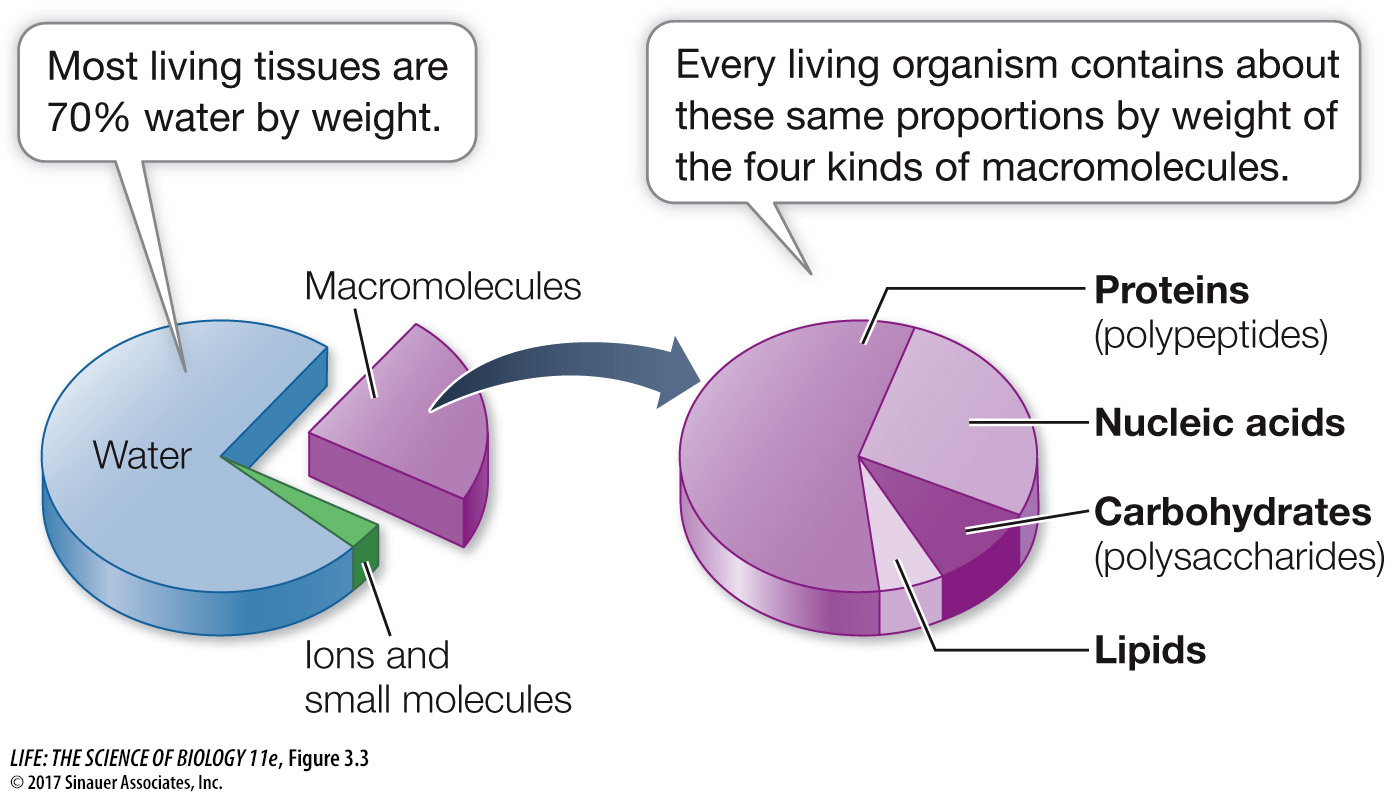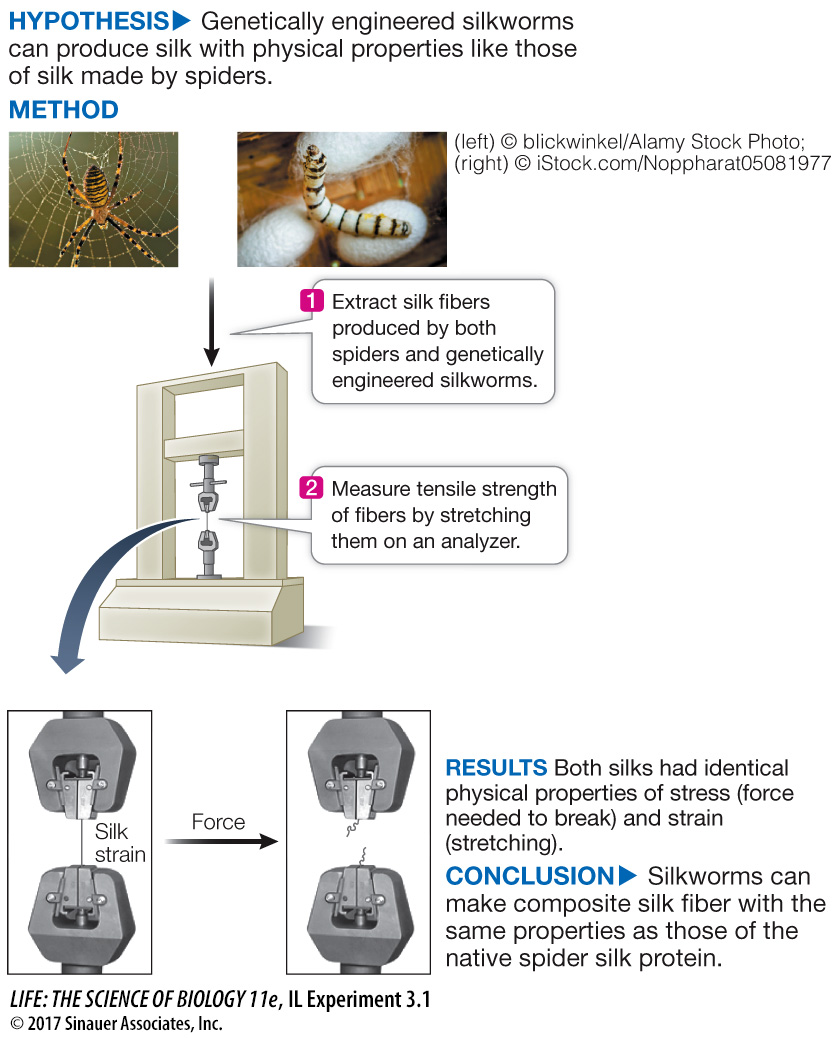The structures of macromolecules reflect their functions
The four kinds of biological macromolecules are present in roughly the same proportions in all living organisms (Figure 3.3). Also, a protein that has a certain structure, and therefore function, in an apple tree probably has a similar structure and function in a human being, because the protein’s chemistry is the same wherever it is found. This impressive biochemical unity reflects the evolution of all life from a common ancestor, by descent with modification. An important advantage of biochemical unity is that some organisms can acquire needed raw materials by eating other organisms. When you eat an apple, the molecules you take in include carbohydrates, lipids, and proteins that can be broken down and rebuilt into the varieties of those molecules needed by humans.

Each kind of macromolecule performs one or more functions such as energy storage, structural support, catalysis (speeding up of chemical reactions), transport of other molecules, regulation of other molecules, defense, movement, or information storage. These roles are not necessarily exclusive; for example, both carbohydrates and proteins can play structural roles, supporting and protecting tissues and organs. However, only the nucleic acids specialize in information storage and transmission. These macromolecules function as hereditary material, carrying the traits of both species and individuals from generation to generation.
investigating life
Making Spider Silk
experiment
Original Paper: Teule, F., Y.-G. Miao, B.-H. Sohn, Y.-S. Kim, J. Hull, M. J. Fraser, R. V. Lewis and D. L. Jarvis. 2012. Silkworms transformed with chimeric silkworm/spider silk genes spin composite silk fibers with improved mechanical properties. Proceedings of the National Academy of Sciences USA. 109: 923–
Spider silk is one of the strongest materials known, but it is very hard to harvest in quantity. Industrial biologists are therefore using genetic engineering to produce the protein fibers. The scientists have coaxed silkworms, insect larvae that make silk fibers used in clothing, to make a much stronger composite of silkworm and spider silk.

work with the data
Spider silk is a protein-
QUESTIONS
1.
To evaluate the properties of the protein fibers, researchers stretched them and measured the forces involved as well as the resulting lengthening of the fibers. You can liken this to stretching a rubber band until it breaks. Stress is the force required to break the fiber; it is measured in millipascals (mPa; 1 Pa is the force in newtons per unit area in m2). Strain is a measure of how much the fiber lengthens (as a percentage of its original length). Table A compares the results from silk from spiders and from genetically engineered silkworms. Did the genetically engineered silkworms make fibers that were similar to native spider silk?
The genetically engineered silk was better than the native spider silk. It was thicker, required more force to break, and resisted strain better than native spider silk.
2.
Why was thickness (diameter) reported in the data?
Fiber thickness is reported because it is one indicator of fiber strength.
3.
What statistical test would you perform to determine if the measured properties were significantly different (seeAppendix B)?
The t-test could determine this.
4.
The scientists measured the properties composite of spider silk compared with those of Kevlar (a synthetic fiber with many uses, including in bicycle tires, racing sails, and body armor) and steel. The results are shown in Table B. What can you conclude about the spider silk?
Spider silk is stronger than Kevlar or steel and weighs less.
| Silk | Diameter (μm) | Max. strain (%) |
|---|---|---|
| Silkworms | 21.8 ± 1.6 | 22.0 ± 5.8 |
| Silkworms, gen. engineer | 21.1 ± 1.4 | 31.8 ± 5.2 |
| Spiders | 8.1 ± 0.4 | 19.7 ± 4.8 |
| Material | Energy required to break filament (joules/kg) | Weight (g/mm3) |
|---|---|---|
| Spider silk | 120,000 | 1.3 |
| Kevlar | 40,000 | 1.4 |
| Steel | 3,500 | 7.84 |
A similar work with the data exercise may be assigned in LaunchPad.
The sequence and chemical properties of the chain of monomers in a macromolecule determine its three-